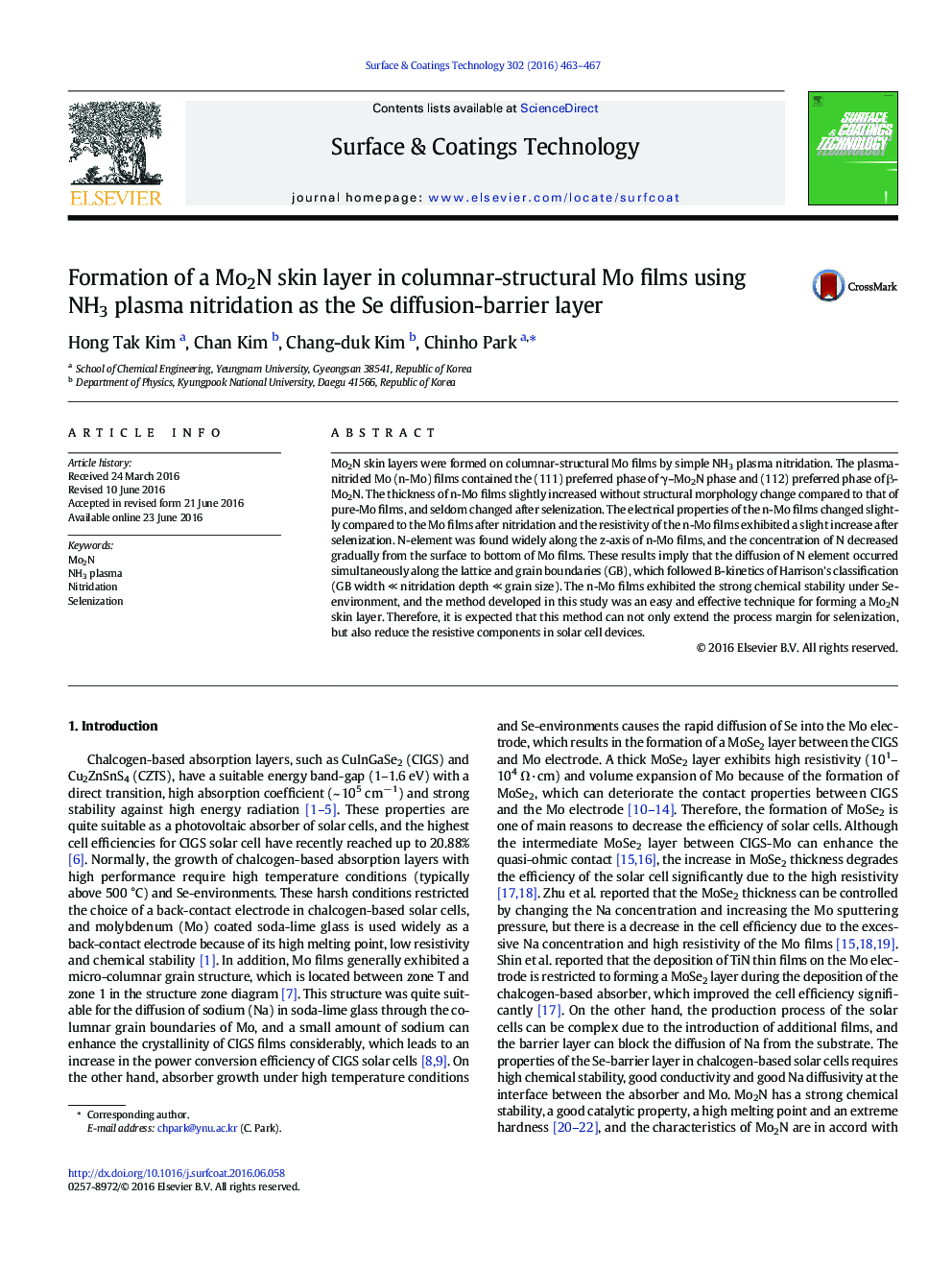| Article ID | Journal | Published Year | Pages | File Type |
|---|---|---|---|---|
| 8025301 | Surface and Coatings Technology | 2016 | 5 Pages |
Abstract
Mo2N skin layers were formed on columnar-structural Mo films by simple NH3 plasma nitridation. The plasma-nitrided Mo (n-Mo) films contained the (111) preferred phase of γ-Mo2N phase and (112) preferred phase of β-Mo2N. The thickness of n-Mo films slightly increased without structural morphology change compared to that of pure-Mo films, and seldom changed after selenization. The electrical properties of the n-Mo films changed slightly compared to the Mo films after nitridation and the resistivity of the n-Mo films exhibited a slight increase after selenization. N-element was found widely along the z-axis of n-Mo films, and the concentration of N decreased gradually from the surface to bottom of Mo films. These results imply that the diffusion of N element occurred simultaneously along the lattice and grain boundaries (GB), which followed B-kinetics of Harrison's classification (GB width âªÂ nitridation depth âªÂ grain size). The n-Mo films exhibited the strong chemical stability under Se-environment, and the method developed in this study was an easy and effective technique for forming a Mo2N skin layer. Therefore, it is expected that this method can not only extend the process margin for selenization, but also reduce the resistive components in solar cell devices.
Related Topics
Physical Sciences and Engineering
Materials Science
Nanotechnology
Authors
Hong Tak Kim, Chan Kim, Chang-duk Kim, Chinho Park,
